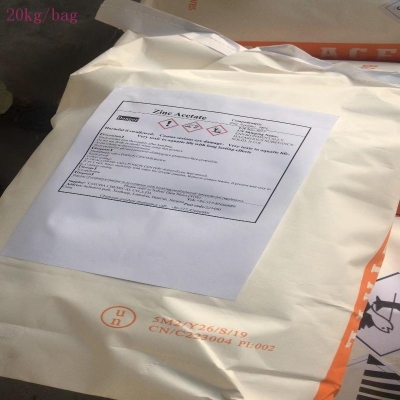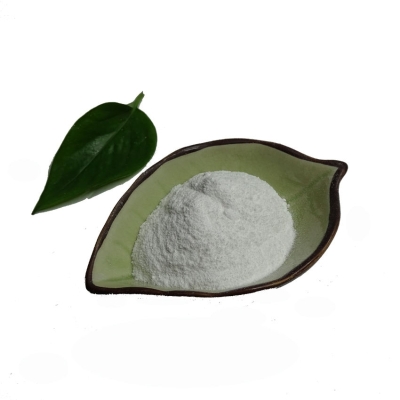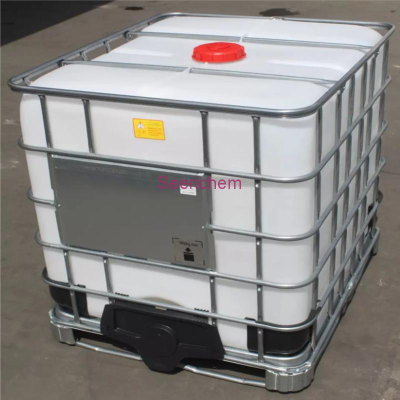-
Categories
-
Pharmaceutical Intermediates
-
Active Pharmaceutical Ingredients
-
Food Additives
- Industrial Coatings
- Agrochemicals
- Dyes and Pigments
- Surfactant
- Flavors and Fragrances
- Chemical Reagents
- Catalyst and Auxiliary
- Natural Products
- Inorganic Chemistry
-
Organic Chemistry
-
Biochemical Engineering
- Analytical Chemistry
-
Cosmetic Ingredient
- Water Treatment Chemical
-
Pharmaceutical Intermediates
Promotion
ECHEMI Mall
Wholesale
Weekly Price
Exhibition
News
-
Trade Service
As the oversupply situation in the domestic urea market intensifies, the reference benchmark for domestic sales prices may be on par with the FOB export prices or, in other words, the international urea market prices.
Domestic industrial demand was weak in March.
There is still pre-social inventory available for spring plowing and agricultural demand.
Dealers still hold bargaining chips.
Urea companies are more passive and may further compromise low prices.
What's more frustrating is that due to speculation of price increases by some urea companies last week, the downstream market has seen lower price cuts, and it feels more or less "speculative".
The hype "policy" has failed to raise prices.
The convening of the two sessions has added many policy influences to the urea market, and it has been one wave after another.
The first is about environmental inspections.
Initial rumors mentioned restricting production of urea companies in Hebei, Shanxi, Shandong and other places and their downstream factories.
Subsequently, the Ministry of Environmental Protection imposed restrictions on Beijing-Tianjin-Hebei and the six provinces of Shandong, Henan, and Shanxi (28 Cities) launched a one-month air quality inspection in the first quarter of 2017.
Because of this, the market for urea that should have moderately stabilized or reduced its price for promotion has evolved into a hype up.
However, an emergency notice was mentioned immediately following the "Regarding the Supply of Fertilizer Market during Spring Plowing": to ensure the supply of natural gas, coal, and raw materials for fertilizer companies during spring plowing, and to change the current situation of limited production in the entire industry.
As a result, in the end, only urea downstream companies, including compound fertilizer companies and the rubber sheet industry, were restricted in production, while urea companies were "safe.
" So far, urea companies' speculation on environmental protection and production restrictions and price increases have come to an end.
Urea will increase the room for correction in March.
As early as before the "environmental protection limit production" storm, the domestic urea industry operating rate continued to rise rapidly, reaching a level of 61%-63% as of the end of February.
The industry has bearish expectations for high-priced urea.
However, the rhythm of falling prices has been disrupted by environmental protection policies.
Although the final result shows that urea companies are not among the production restrictions, it virtually drags the urea market down at the end of February to mid-March.
Moreover, because the operating rate of the urea industry did not decrease as expected, industrial demand was reduced instead, and the demand for agricultural spring plowing was delayed.
This further caused the production of urea companies to fail to sell in time during the priceless slow-moving period in early March.
.
Especially when the downstream agricultural market continues to digest the pre-stocks, dealers generally hold a wait-and-see attitude, and the willingness to replenish is not strong.
Factories may increase promotional efforts, and the downward prospect of urea prices will also be greater than the expected decline at the end of February.
If the price increase is not successful, the price drop will be exacerbated, and the urea companies will eventually be "smart and mistaken.
" The supply and demand situation of urea is not optimistic.
Only from the perspective of urea market supply and demand, the industry operating rate of about 62% in the early stage has exceeded the so-called balance point of production and sales.
And due to the two sessions, the urea production capacity in Inner Mongolia was delayed.
Will bring more severe production surplus expectations to the market outlook.
On the other hand, domestic demand is even more bearish.
At present, due to strict environmental inspections, the demand for the urea industry in northern my country has been severely reduced.
Even if it improves in the later stage, industrial demand will not increase significantly until April.
During this period, if only relying on domestic spring plowing agricultural demand to support, the situation of oversupply and demand has become more obvious.
However, the current international urea market does not leave China an export opportunity.
The FOB price of 235-240 US dollars/ton of small granular urea corresponds to the domestic 1565-1600 yuan/ton port, and the domestic sales price of urea is still around 50 yuan/ton.
There is a price difference, and there are no new tenders for traders to find, so they can only wait and see in the short term.
It is conservatively estimated that according to the current domestic urea market supply and demand situation, the ex-factory prices of major urea producing areas such as Shandong, Hebei and Henan are expected to fall to 1550-1580 yuan/ton.
And it does not rule out the existence of lower bargaining prices between some large agricultural companies and factories.
As far as the author knows: This week, Henan has 1,560 yuan/ton for outbound; Shandong also has 1,600 yuan/ton for domestic sale; Shanxi has more than 1,500 yuan/ton for outbound.
Once the above-mentioned low prices are concerned by the downstream market, the degree of the game surrounding the ex-factory price of urea will not be underestimated.
Domestic industrial demand was weak in March.
There is still pre-social inventory available for spring plowing and agricultural demand.
Dealers still hold bargaining chips.
Urea companies are more passive and may further compromise low prices.
What's more frustrating is that due to speculation of price increases by some urea companies last week, the downstream market has seen lower price cuts, and it feels more or less "speculative".
The hype "policy" has failed to raise prices.
The convening of the two sessions has added many policy influences to the urea market, and it has been one wave after another.
The first is about environmental inspections.
Initial rumors mentioned restricting production of urea companies in Hebei, Shanxi, Shandong and other places and their downstream factories.
Subsequently, the Ministry of Environmental Protection imposed restrictions on Beijing-Tianjin-Hebei and the six provinces of Shandong, Henan, and Shanxi (28 Cities) launched a one-month air quality inspection in the first quarter of 2017.
Because of this, the market for urea that should have moderately stabilized or reduced its price for promotion has evolved into a hype up.
However, an emergency notice was mentioned immediately following the "Regarding the Supply of Fertilizer Market during Spring Plowing": to ensure the supply of natural gas, coal, and raw materials for fertilizer companies during spring plowing, and to change the current situation of limited production in the entire industry.
As a result, in the end, only urea downstream companies, including compound fertilizer companies and the rubber sheet industry, were restricted in production, while urea companies were "safe.
" So far, urea companies' speculation on environmental protection and production restrictions and price increases have come to an end.
Urea will increase the room for correction in March.
As early as before the "environmental protection limit production" storm, the domestic urea industry operating rate continued to rise rapidly, reaching a level of 61%-63% as of the end of February.
The industry has bearish expectations for high-priced urea.
However, the rhythm of falling prices has been disrupted by environmental protection policies.
Although the final result shows that urea companies are not among the production restrictions, it virtually drags the urea market down at the end of February to mid-March.
Moreover, because the operating rate of the urea industry did not decrease as expected, industrial demand was reduced instead, and the demand for agricultural spring plowing was delayed.
This further caused the production of urea companies to fail to sell in time during the priceless slow-moving period in early March.
.
Especially when the downstream agricultural market continues to digest the pre-stocks, dealers generally hold a wait-and-see attitude, and the willingness to replenish is not strong.
Factories may increase promotional efforts, and the downward prospect of urea prices will also be greater than the expected decline at the end of February.
If the price increase is not successful, the price drop will be exacerbated, and the urea companies will eventually be "smart and mistaken.
" The supply and demand situation of urea is not optimistic.
Only from the perspective of urea market supply and demand, the industry operating rate of about 62% in the early stage has exceeded the so-called balance point of production and sales.
And due to the two sessions, the urea production capacity in Inner Mongolia was delayed.
Will bring more severe production surplus expectations to the market outlook.
On the other hand, domestic demand is even more bearish.
At present, due to strict environmental inspections, the demand for the urea industry in northern my country has been severely reduced.
Even if it improves in the later stage, industrial demand will not increase significantly until April.
During this period, if only relying on domestic spring plowing agricultural demand to support, the situation of oversupply and demand has become more obvious.
However, the current international urea market does not leave China an export opportunity.
The FOB price of 235-240 US dollars/ton of small granular urea corresponds to the domestic 1565-1600 yuan/ton port, and the domestic sales price of urea is still around 50 yuan/ton.
There is a price difference, and there are no new tenders for traders to find, so they can only wait and see in the short term.
It is conservatively estimated that according to the current domestic urea market supply and demand situation, the ex-factory prices of major urea producing areas such as Shandong, Hebei and Henan are expected to fall to 1550-1580 yuan/ton.
And it does not rule out the existence of lower bargaining prices between some large agricultural companies and factories.
As far as the author knows: This week, Henan has 1,560 yuan/ton for outbound; Shandong also has 1,600 yuan/ton for domestic sale; Shanxi has more than 1,500 yuan/ton for outbound.
Once the above-mentioned low prices are concerned by the downstream market, the degree of the game surrounding the ex-factory price of urea will not be underestimated.







